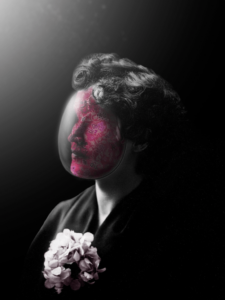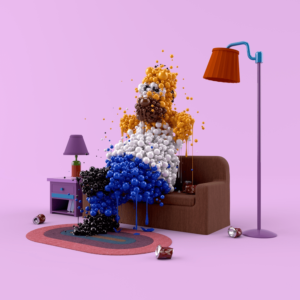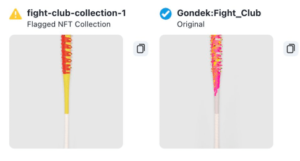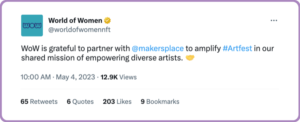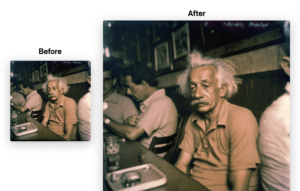“All the people I collaborated with are my heroes in one way or another because their vision, technical skills, or something else is so different from mine.”
— Originalplan
Introduction
Despite the crypto art space being so new, it’s still the norm to feel (or be) drowned out by the clamor of more established voices and to feel (or be) isolated in your creative practice. It’s in these moments that the importance of strategic collaboration becomes increasingly evident.
This article takes a closer look at the insights of a pivotal figure in this digital realm—Originalplan, a pioneering multidisciplinary digital artist and designer known best for his vinyl toy and collaborative canvas, the Bearbrick.
Through his innovative work combining street art and collectible culture with digital creativity, Originalplan provides a unique and illuminating perspective on the practice of collaboration.
Following the career trajectory of artists who’ve made significant strides in the crypto art space, such as sgt_slaughtermelon, Andreas Lilja, or jrdsctt, one can observe a common thread—the use of collaboration as a tool for mutual growth and creative innovation.
As we delve into the ethos of Originalplan, we aim to explore how this principle applies to his artistic journey. Through his lens, we hope to elucidate the practice, benefits, drawbacks, opportunities, and obstacles of creative collaboration, providing valuable insights for other digital artists seeking to further their careers in this revolutionary era.
This interview was inspired by our interview with Originalplan, which can be found here.
Understanding Collaboration in Web3
The role of collaboration in the digital art and NFT space is increasingly gaining prominence where collaboration is about so much more than jointly producing art; it’s a multifaceted process that extends to sharing ideas, expanding creative horizons, and jointly navigating this rapidly evolving digital art market.
Originalplan provides a first-hand perspective on how collaborations function in this space, drawing from his landmark project “All Your Bases Are Belong to Us.” This project illustrated the potential of collective endeavors in the Web3 era, involving 25 artists from diverse backgrounds who took over multiple platforms for a 24-hour period. By allowing collaborators to modify his original Bearbricks file, Originalplan highlighted a unique aspect of Web3 collaboration: the blending of individual creative styles while respecting each artist’s unique voice.
In a recent podcast interview, sgt_slaughtermelon added a factor to consider with regard to a collaborative partner:
“The best collaborations are with people who I can see will create something with me that neither of us could achieve individually. That’s the real essence of a good collaboration. I’ve been part of projects where I realized I could do it all by myself, but it’s not the same. It lacks the novelty of a joint effort.”
— sgt_slaughtermelon
Collaboration comes with a unique set of challenges. Balancing individual artistic vision with collaborative synergy, ensuring equitable credit and compensation, and navigating intellectual property rights are some of the issues that artists must address.
As we explore further, we will delve into how Originalplan and other artists navigate these obstacles while maximizing the immense potential of collaborative efforts in this Web3 era.
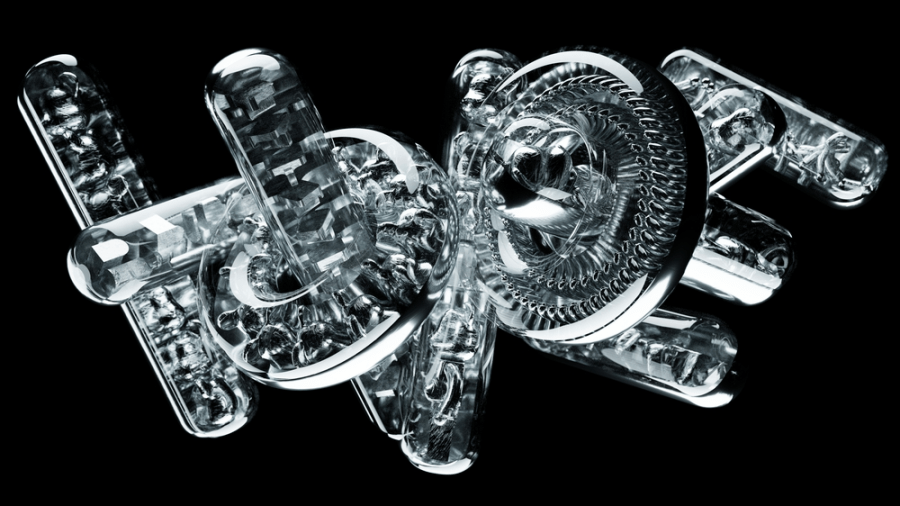
Potential Opportunities and Challenges of Collaborations
Collaboration offers a wealth of opportunities for digital artists. Beyond the sheer potential for creative expansion, these joint ventures can help artists expand their audience reach, gain exposure in new markets, and diversify their portfolio.
For example, Originalplan’s collaboration with REMX presented a novel opportunity to design metaverse wearables, a departure from his usual creations, further showcasing his versatility.
Yet, alongside these opportunities lie significant challenges. The decentralized nature of the web3 space, while empowering, can complicate the logistics of collaboration. Transparent and fair division of labor, profit sharing, and credit attribution become critical considerations in these partnerships. Web3 artists are fortunately the most well-prepared to weather certain of these challenges thanks to smart contracts and automatic distribution of funds.
In a landscape where the boundaries of creative ownership are blurred, protecting intellectual property is another hurdle. The remix culture prevalent in web3 often raises questions about the distinction between inspiration, appropriation, and outright theft. There’s an obvious distinction between an explicit collaboration and a derivative.
Collaborators should openly discuss and agree to an equitable IP ownership. Creators of derivatives must be sure their work is defensible as an homage rather than plagiarism.
Moreover, ensuring the quality of collaborative work while maintaining the integrity of one’s artistic voice can be a tightrope walk. Lessons from successful collaborators, such as Originalplan’s insistence on maintaining the same level of quality in all his works, underscore the importance of balancing creative autonomy and compromise in these joint endeavors.
For instance, what does an artist do if their collaborator is happy with something that the artist is dissatisfied with? And what if the collaborator’s contribution is the source of that dissatisfaction? This is just one thing that could muddy the waters and should be considered before work begins.
Strategic Approaches to Collaboration
In pursuing collaborations, artists need to adopt strategic approaches to maximize benefits and mitigate challenges.
The primary step is finding a fitting collaborator. As Originalplan’s work demonstrates, shared vision and respect for each other’s creativity play a pivotal role in the success of joint ventures. Prior collaboration between artists like Trevor Jones and Jose Delbo, two distinct artists who blended their styles to create unique NFTs, underscores the importance of this synergy.
Artists should also clearly define roles, responsibilities, and profit-sharing mechanisms at the outset. Furthermore, protecting intellectual property while fostering creativity within collaborations is crucial.
As for maintaining artistic integrity, lessons from Originalplan and his regard for quality offer a blueprint. Staying true to one’s unique artistic voice, even when meshing styles and themes with another creator, should be at the core of any collaborative effort.
Lastly, artists should view collaborations as a means to explore new mediums, forms, and styles. Originalplan’s foray into metaverse wearables with REMX highlights this potential for creative expansion.
By adopting these strategic approaches, digital artists can navigate collaborations in the NFT space more effectively, turning potential obstacles into opportunities for creative growth.
This interview was inspired by our interview with Originalplan, which can be found here.

Conclusion: The Future of Collaborations in Web3
As we reflect on the potential and strategies for successful collaboration in web3, it’s clear that this new digital frontier offers significant opportunities for artists. Through strategic partnerships, artists can extend their creative reach, explore new artistic mediums, and establish a wider community presence.
Drawing from the experiences of digital artists like Originalplan, it’s evident that collaboration, when strategically pursued, can significantly contribute to an artist’s success in the NFT space. In the same way that Originalplan uses the Bearbrick to collaborate with some of the world’s biggest artists, you too can find unique avenues to innovate and express your creativity.
Artists who navigate collaborative opportunities wisely stand to gain not just in terms of monetary value, but more importantly, in creative growth, community engagement, and personal fulfillment. It is, therefore, up to every artist to assess these opportunities and challenges in the context of their own practice and chart a course that best aligns with their unique artistic vision.
Hero Image Credit: Refractions by Originalplan x Murat Sayginer
For updates on all of our upcoming artist features, subscribe to our newsletter below.
- SEO Powered Content & PR Distribution. Get Amplified Today.
- PlatoData.Network Vertical Generative Ai. Empower Yourself. Access Here.
- PlatoAiStream. Web3 Intelligence. Knowledge Amplified. Access Here.
- PlatoESG. Automotive / EVs, Carbon, CleanTech, Energy, Environment, Solar, Waste Management. Access Here.
- BlockOffsets. Modernizing Environmental Offset Ownership. Access Here.
- Source: https://rare.makersplace.com/2023/07/06/designing-good-collaborations-lessons-from-originalplan/?utm_source=rss&utm_medium=rss&utm_campaign=designing-good-collaborations-lessons-from-originalplan
- :is
- :not
- :where
- $UP
- 1
- 25
- 9
- a
- About
- Achieve
- added
- address
- adopt
- Adopting
- aim
- Aligns
- All
- Allowing
- alongside
- also
- an
- and
- Another
- any
- approaches
- ARE
- Art
- article
- artist
- artistic
- Artists
- AS
- aspect
- assess
- At
- audience
- Automatic
- backgrounds
- balancing
- BE
- because
- become
- becomes
- been
- before
- being
- below
- ben
- benefits
- BEST
- between
- Beyond
- Biggest
- blending
- blockchain
- boundaries
- but
- by
- CAN
- canvas
- Career
- careers
- certain
- challenges
- Chart
- Chrome
- Clamor
- clear
- clearly
- closer
- collaborate
- collaborated
- collaboration
- collaborations
- collaborative
- Collectible
- Collective
- combining
- comes
- Common
- community
- Compensation
- compromise
- Consider
- considerations
- considered
- context
- contracts
- contribute
- contribution
- Core
- could
- course
- create
- creations
- Creative
- creativity
- creator
- creators
- credit
- critical
- crucial
- crypto
- Crypto Art
- Culture
- decentralized
- demonstrates
- derivative
- Derivatives
- Design
- Designer
- designing
- different
- digital
- Digital Art
- discuss
- distinct
- distinction
- distribution
- diverse
- diversify
- Division
- do
- does
- drawbacks
- drawing
- drowned
- each
- Editorial
- effectively
- effort
- efforts
- else
- empowering
- endeavors
- engagement
- ensuring
- equitable
- Era
- essence
- establish
- established
- Ethos
- Even
- Every
- evident
- evolving
- example
- Expand
- expanding
- expansion
- Experiences
- explore
- Exposure
- express
- extend
- extends
- factor
- fair
- Features
- feel
- Figure
- File
- Find
- finding
- fitting
- For
- Foray
- forms
- Fortunately
- fostering
- found
- from
- Frontier
- fulfillment
- function
- funds
- further
- Furthermore
- future
- Gain
- gaining
- good
- Growth
- happy
- help
- Heroes
- Highlighted
- highlights
- his
- hope
- Horizons
- How
- HTTPS
- i
- ideas
- if
- illuminating
- image
- immense
- importance
- in
- increasingly
- individual
- Individually
- innovate
- Innovation
- innovative
- insights
- Inspiration
- inspired
- instance
- integrity
- intellectual
- intellectual property
- Interview
- into
- involving
- IP
- isolated
- issues
- IT
- joint
- joint ventures
- jones
- journey
- just
- just one
- known
- labor
- landmark
- landscape
- Lens
- Lessons
- Level
- lie
- like
- logistics
- Look
- made
- mailchimp
- maintaining
- Market
- Markets
- max-width
- Maximize
- maximizing
- me
- means
- mechanisms
- Metaverse
- Mitigate
- modify
- Moments
- Monetary
- more
- most
- much
- multidisciplinary
- multifaceted
- multiple
- must
- mutual
- my
- Nature
- Navigate
- navigating
- Need
- Neither
- New
- Newsletter
- NFT
- NFT space
- NFTs
- novel
- novelty
- observe
- obstacles
- obvious
- of
- offer
- Offers
- often
- on
- ONE
- openly
- opportunities
- Opportunity
- or
- original
- Other
- our
- out
- over
- own
- ownership
- part
- partner
- partnerships
- People
- period
- personal
- perspective
- Pioneering
- pivotal
- Platforms
- plato
- Plato AiStream
- Plato Data Intelligence
- PlatoAiCast
- PlatoData
- Play
- plugin
- podcast
- portfolio
- potential
- practice
- presence
- presented
- prevalent
- primary
- principle
- Prior
- process
- producing
- Profit
- project
- projects
- prominence
- property
- Property Rights
- protecting
- provides
- providing
- quality
- Questions
- raises
- rapidly
- rather
- reach
- real
- realized
- recent
- reflect
- regard
- Remix
- respect
- respecting
- responsibilities
- revolutionary
- rights
- Role
- roles
- same
- see
- seeking
- set
- shared
- sharing
- should
- showcasing
- significant
- significantly
- skills
- smart
- Smart Contracts
- So
- some
- something
- Source
- Space
- stand
- Step
- Still
- Strategic
- Strategic Partnerships
- Strategically
- strategies
- street
- strides
- styles
- subscribe
- success
- successful
- such
- sure
- synergy
- takes
- Technical
- technical skills
- terms
- than
- thanks
- that
- The
- The Future
- The Source
- theft
- their
- therefore
- These
- thing
- this
- Through
- to
- too
- took
- tool
- toy
- trajectory
- transparent
- Trevor
- true
- Turning
- two
- underscores
- unique
- upcoming
- Updates
- us
- use
- uses
- Valuable
- value
- Ventures
- View
- vinyl
- vision
- Voice
- VOICES
- was
- Waters
- Way..
- we
- Wealth
- wearables
- Weather
- Web3
- Web3 space
- What
- when
- which
- while
- WHO
- wider
- Wider Community
- will
- with
- within
- WordPress
- WordPress plugin
- Work
- works
- world’s
- X
- you
- Your



